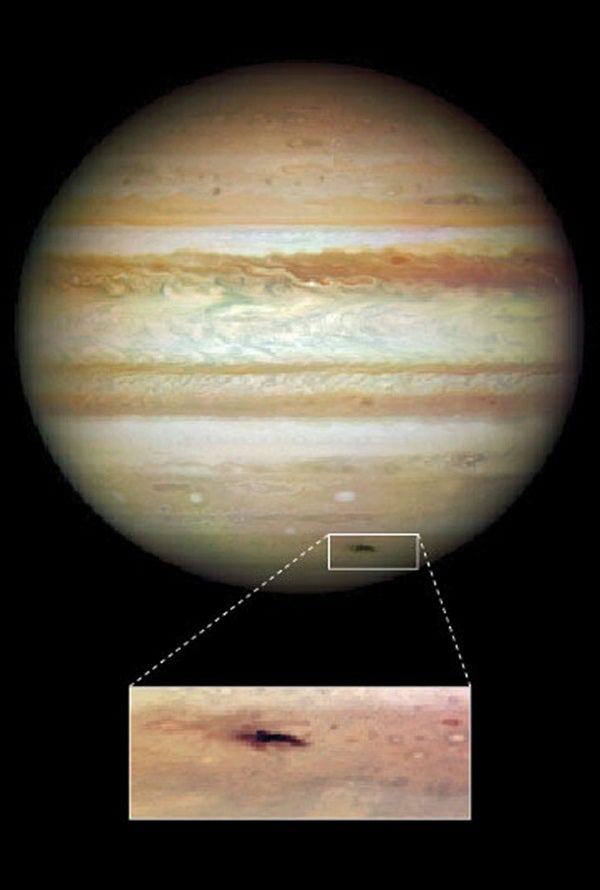
December 2010 SK Jupiter scars – Dark scars on Jupiter, such as this one seen in July 2009, result from large meteors exploding in the planet’s atmosphere.
Courtesy of NASA/ESA/H. Hammel (Space Science Institute, Boulder, Colorado), and the Jupiter Impact Team
Courtesy of NASA/ESA/H. Hammel (Space Science Institute, Boulder, Colorado), and the Jupiter Impact Team
As an object collides and moves through Jupiter’s atmosphere, it compresses the air in front of it – this is called atmospheric ram pressure. The compressed air reaches tens of thousands of degrees, heating the object.
The explosion blasts out along the trail that the massive meteor created. A huge fireball of heated atmosphere rises high above Jupiter’s cloud tops from this superheated column. The fireball’s debris rapidly cools into dark jovian “soot” and collapses onto Jupiter’s cloud tops, making a characteristic dark impact site.









